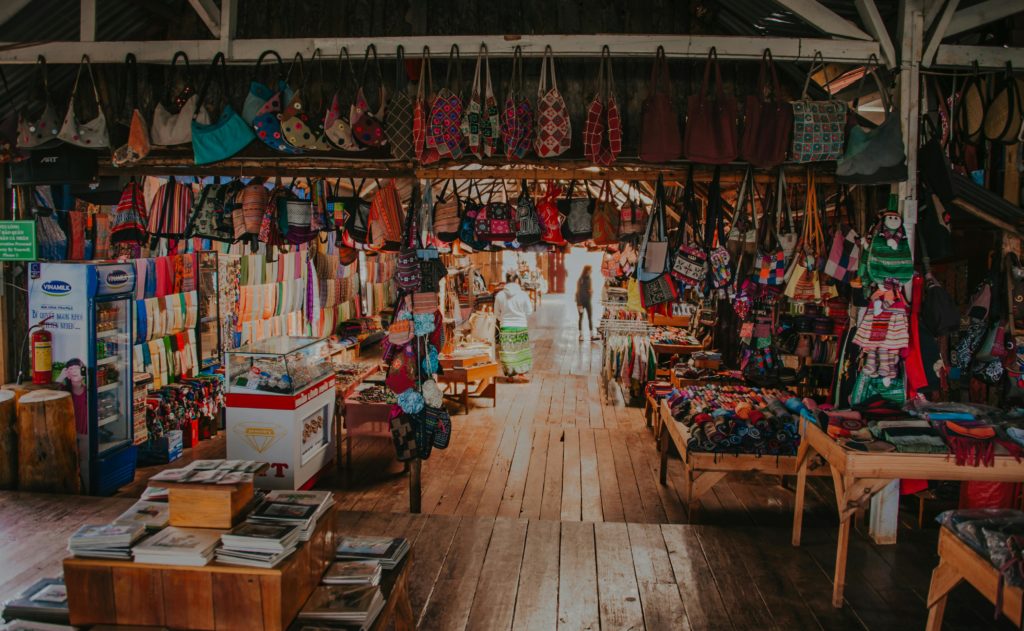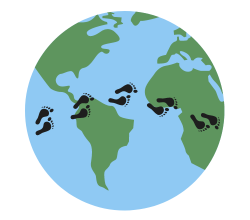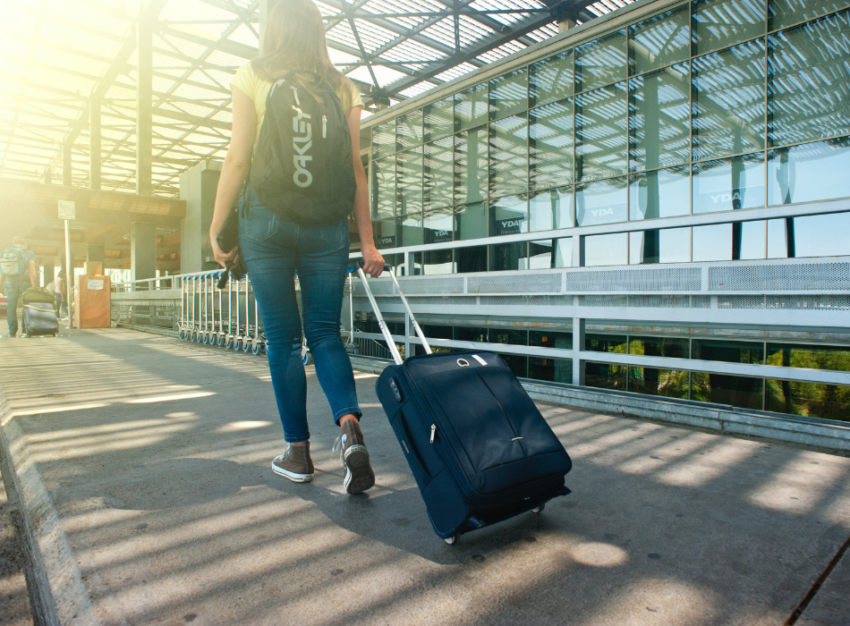I love to travel and recently went on my first big trip since before the pandemic (to Mexico, if you were curious). Part of the appeal of travelling is doing things differently than in your day-to-day life. This can be good if it means that you’re trying new things and open to different experiences.
However, it may also mean leaving your sustainable habits by the wayside. When you’re travelling, you often spend more money, generate more waste, buy more meals at restaurants and use different forms of transportation. Travelling also has other environmental impacts, including greenhouse gas emissions from getting to your destination and impacts on the local economy and environment.
I wouldn’t recommend stopping travel altogether. I think that as an environmentalist and a human, it’s valuable to learn about how other places do things. You learn about other cultures and realize that there are different ways of living and organizing society. Plus, travel is fun!
However, there are steps that you can take to be more sustainable while travelling, plus you can consider larger questions like where and when to travel and how to get there.
One helpful framework for this is sustainable tourism. According to Sustainable Travel International, sustainable tourism “focuses on reducing tourism’s negative impacts and on maximizing its positive benefits for communities, cultures, ecosystems, and the planet.”
What are the environmental impacts of travel and tourism?

The tourism industry as a whole uses significant natural resources and causes habitat loss and pollution with its resorts, hotels, golf courses and other attractions. On an individual basis, tourists may have more disposable income and a different lifestyle than local residents, including when it comes to water and energy use.
Collectively, tourists can cause problems if they come in greater numbers than an area can sustain, in what’s known as overtourism. This may lead to crowding, littering, inflated housing prices, conflict with residents and other issues. Because tourism is often seasonal in nature, tourist-oriented businesses also struggle during the low season.
Tourism is responsible for approximately 8% of global carbon emissions, with the largest portion (49%) of those emissions coming from transportation. Among forms of transportation, planes and cars typically emit the most CO2 per kilometre travelled. The good news is that there are ways to mitigate some of these impacts.
Tips for being sustainable while travelling
By being intentional about planning your trip and your behaviour while on vacation, it’s possible to be a responsible tourist, reducing the environmental impact of your travels and even making a positive difference in the communities you visit.
Rethink when and where to travel
Try travelling to less-popular destinations or at least travelling at less-popular times of year. The benefits of off-peak travel are obvious: you’ll avoid the crowds and reduce strain on local resources, plus you’ll benefit from cheaper prices. Need inspiration? Low Season Traveller suggests places to visit by month of the year to beat the crowds.
Consider as well staying in one location for longer instead of travelling to several places. Besides reducing greenhouse gas emissions from transportation, this will be a more relaxing experience and will give you more time to get to know the place. By remaining in one city in Mexico, my friend and I were able to discover some favourite restaurants and return to them during our stay!
Travel by train or bus
Where possible, opt for a sustainable option to reach your destination, such as taking the train or bus. Flying is energy-intensive and polluting. The David Suzuki Foundation estimates that one return flight from Montreal to London generates as much carbon emissions as heating a European home for an entire year.
If it’s impossible or unfeasible to avoid flying, here are a few measures you can take to reduce emissions:
- Fly less often
- Fly direct
- Pack light
- Research airlines that are taking steps to reduce their emissions
Consider your accommodation

When thinking about where to stay, look for eco-friendly accommodation options. Check their website to find out what specific sustainability actions they’re taking in their construction and/or operations. Look for hotels that are certified by an organization like the Global Sustainable Tourism Council, EarthCheck, Green Globe or Green Key Global.
If you’re staying at a hotel, reuse your towels and hang up the “Do not disturb” sign to avoid unnecessary laundering. If you opt for an Airbnb, check out these sustainability tips for Airbnb guests from Life of an Earth Muffin.
Travel sustainably around the destination
Once you’ve arrived at your destination, try getting around using sustainable forms of transportation like public transit, walking or bike sharing. Walking and biking are great ways to explore a city. I love taking transit when visiting a new place to experience the city the way locals do.
Many cities offer airport buses and day or weekend transit passes. Ahead of time, research the transit system to find out about modes, routes and fares, including any discounts for tourists.
Support local

Getting off the beaten path doesn’t only apply to picking your destination. When you’re on your trip, try exploring different neighbourhoods beyond the touristy part of town. Buy any souvenirs from local vendors and ensure that they’re durable and well-made.
Buying local will keep money in the local economy and reduce the distance that goods have travelled. Prices will often be lower as well. It helps to research the local culture beforehand and learn a few words of the language.
Bring reusable containers to generate less waste
Bring reusables with you, including a reusable water bottle, reusable bags, reusable containers, and a reusable coffee cup or travel mug (as space in your suitcase permits). Make sure as well to pack your own toiletries in refillable travel bottles instead of using the little bottles provided. This will reduce your use of single-use plastics and other disposable containers.
Before you go, research the waste management system to find out how waste is sorted and any tools or resources for sorting waste.
While on vacation, try to avoid food waste and overconsumption. You’ll be tempted to try all the new and exciting foods. Consider eating snacks and light meals throughout the day instead of heavy meals to help both your wallet and the planet.
How to travel more sustainably
Travel is an activity that’s inherently unsustainable, from the greenhouse gas emissions from transportation to its use of natural resources and focus on consumption. Yet travel can also support local economies and promote personal growth. By following some of these tips, you can walk more lightly upon the earth and focus on enjoying your vacation.
I want to know: How do you travel with sustainability in mind?
Categories and tags:
Share this post:

